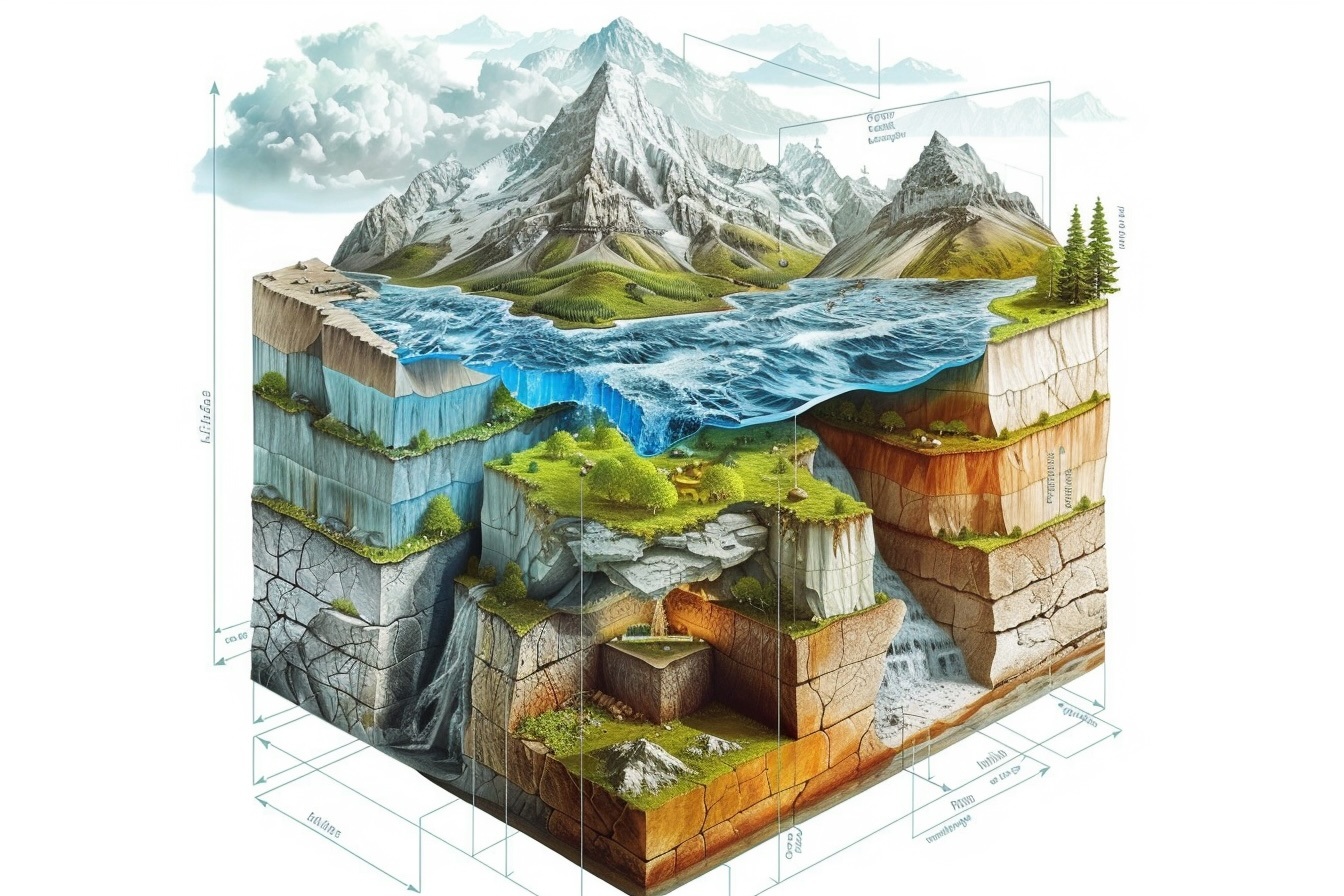"By emphasizing the interconnectedness of Earth's systems, CZ science provides the insights needed to navigate the complexities of global environmental change, ensuring the resilience of the critical zone upon which terrestrial life depends."
Advancing Critical Zone Science: Synthesis and Collaboration Presented at EGU24
Posted: January 6, 2026

The concept of the Critical Zone (CZ) represents an integrated framework for understanding the Earth's surface where life interacts with the lithosphere, hydrosphere, atmosphere, and biosphere and is the focus of research presented in the 2024 European Geophysical Union’s 2024 General Assembly session “Advancing Critical Zone Science Across Scales through Synthesis and Collaboration” during the April 2024 event in Vienna, Austria.
“Advancing Critical Zone Science” is co-chaired by Dust^2 Cluster principal investigator Jeff Munroe, who is based at Middlebury College, and includes more than a dozen presentations collected into two thematic ‘chapters’.
The first chapter collects five papers together and is titled “Critical Zone Networks: Synthesis and Collaboration”. This chapter includes “Advancing Critical Zone Science Across Scales through Synthesis and Collaboration”, a session about Dust^2’s home in the Critical Zone Collaborative Network and outlines how the nine CZNet Clusters share experts, ideas, and data among and between each other to ask innovative research questions.
CZNet is a 5-year project funded by the U.S. National Science Foundation (NSF). This long-term support underscores the importance of studying the dynamic interactions between terrestrial and marine environments, highlighting the critical zone's role in buffering ecological and economic impacts from phenomena such as land use, sea level rise, wildfires, drought, and flooding.
The Synthesis and Collaboration chapter also includes “Exploring the landscape heterogeneity and the hydrological diversity in three contrasted observatories of the French critical zone research infrastructure OZCAR”, which explored water cycle modeling across diverse French landscapes included in the Critical Zone Observatories: Research and Application project, revealing insights into how geological and climatic variations influence hydrological processes.
According to its presenters, this comparative study highlights the necessity of considering both the long-term evolution of the CZ and current environmental forcings to fully understand water storage and flow within watersheds.
Following the OZCAR session describing work in France, attendees travel to Germany for “Lessons learned from 15 years of TERENO: the integrated TERrestrial ENvironmental Observatories in Germany”.
Like OZCAR, TERENO's establishment of a network of observatories across Germany underscores the importance of long-term, interdisciplinary research in capturing the effects of global environmental change. The network serves as a crucial infrastructure for environmental monitoring and modeling, providing valuable data that inform strategies for managing environmental challenges. Presenters from TERENO articulate the goal of this initiative as addressing "the need to develop and provide integrated observation systems to better understand and manage global and regional environmental change."
Specific work from the U.S. Critical Zone Collaborative Network is shared as part of “Hydrological, biogeochemical, and ecological linkages at the land-sea margin: Insights from a coastal critical zone network” and then attendees visit the Himalayas with findings reported in “High Mountain Plateau Margin Critical Zone Observatory, Kaligandaki River Nepal” which extends the reach of CZ science to high mountain environments, areas that are both critically important and underrepresented in global monitoring efforts. This project's comprehensive approach to studying water cycles and sediment dynamics in the context of climate change and tectonic activity illustrates the adaptability and relevance of CZ science across diverse landscapes.
By emphasizing the interconnectedness of Earth's systems, CZ science provides the insights needed to navigate the complexities of global environmental change, ensuring the resilience of the critical zone upon which terrestrial life depends.
This research ‘chapter’ presented during EGU24 reflects the evolution of Critical Zone science from its conceptual inception to its current role as a cornerstone of interdisciplinary environmental research.
Read more about the second chapter of “Advancing Critical Zone Science Across Scales through Synthesis and Collaboration” here.

 Dust^2
Dust^2